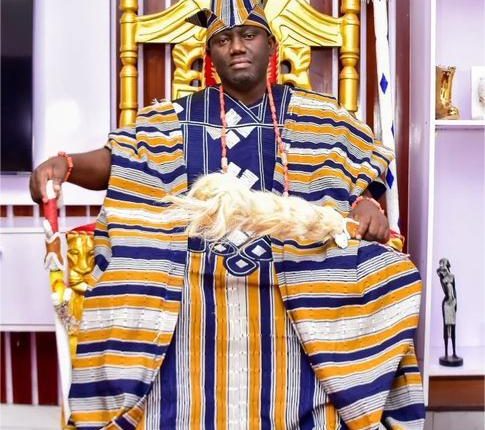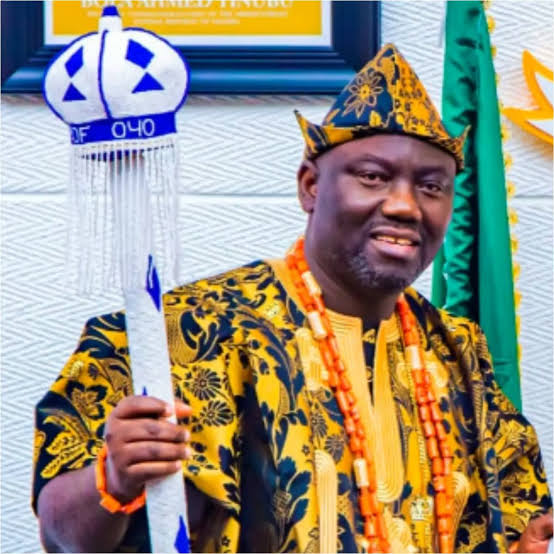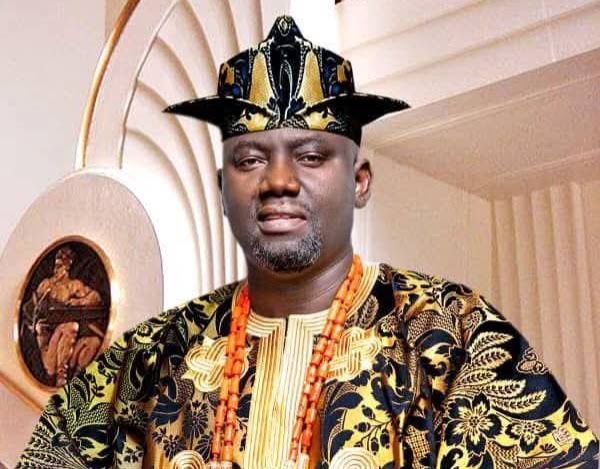 Prince Oshokoya Adeniyi Ibrahim: You people are just creating more harm than good in yoruba land but I have few questions to ask 1. Can Alafin wear Ade aare crown ?
Prince Oshokoya Adeniyi Ibrahim: You people are just creating more harm than good in yoruba land but I have few questions to ask 1. Can Alafin wear Ade aare crown ?
2. Is Alafin the first child of oduduwa?
3. How many town and villages that migrate to their present location?
4. Are other towns founded by others oduduwa under oyo kingdom?
My response
Your questions strike at the very soul of Yoruba historical consciousness, and in responding, it is crucial to peel away the veil of modern politicization and return to the sacred archives of oral tradition, linguistic truth, and indigenous statecraft. Let us address each point with academic clarity and cultural reverence—ko sí irọ̀ nílé Yorùbá, kí a má bà a lọ́rúkọ Odùduwà.
1. Can the Alaafin Wear the Ade Aare Crown?
No, the Alaafin cannot and does not wear the Ade Aare crown, not because he is inferior to it, but because the Ade Aare is a subordinate crown meant exclusively for the Aare Ona Kakanfo—the supreme military general of the old Oyo Empire. The Aare is a creation of the Alaafin, not his peer. The Alaafin is the giver of that crown, and traditionally, ko s’eni ti o fun ni ade to ga ju eni to fi i l’ade lo—he who confers the crown is always greater than he who receives it.
The Ade Aare is a symbol of war; the Ade Aláàfin is a symbol of imperial divinity and centralized sacred authority. The Alaafin rules over the Oyo Mesi, the Ogboni, and the military arm of the state. Thus, he wears the “Ade Aseyori”—the Crown of Conquest, Wisdom, and Divine Mandate.
2. Is the Alaafin the First Child of Oduduwa?
The narrative of who is the “first child” of Odùduwà must be approached with cultural discernment. Yoruba heritage is not just genealogical but civilizational. While some traditions argue that figures like Okanbi or Oranmiyan emerged first, what matters more is not linear birth order but the expansion and institutionalization of Oduduwa’s legacy through empire-building.
The Alaafin traces descent through Oranmiyan, the warrior prince of Oduduwa, and founder of both the Oyo Empire and the Benin dynasty. Through Oranmiyan, the Alaafin embodies not just lineage but dynastic innovation and statecraft. The Alaafin’s dominion—**“Ilú Ọ̀yọ́ Ajaka, Ọ̀yọ́ Mesi, Ọ̀yọ́ ile, Ọ̀yọ́ tuntun”—**became the cornerstone of Yoruba political philosophy, military administration, and imperial expansion.
So while the Ooni of Ife may be Arole Oduduwa—the spiritual custodian—the Alaafin is the political heir who transformed the legacy of Oduduwa into an empire that reigned for centuries across present-day Nigeria, Benin Republic, and parts of Togo.
3. How Many Towns and Villages Migrated to Their Present Locations?
Hundreds of Yoruba towns and villages trace their present-day locations to dispersions and realignments following the collapse of Old Oyo (Oyo Ile) in the 19th century. This migration was further hastened by the Fulani Jihad, internal wars, and colonial reconfigurations. Among these towns are Ibadan, Abeokuta, Iseyin, Ogbomoso, and Ilorin (although Ilorin was later Islamized and politically absorbed by the Sokoto Caliphate).
Many of these towns were military outposts, settlements for princes, or resettlement areas for war refugees under the authority of the Alaafin. Even post-Oyo collapse, many of these towns continued to acknowledge the cultural supremacy of the Alaafin in rites, titles, and ancestral homage.
4. Are Other Towns Founded by Oduduwa’s Descendants Under the Oyo Kingdom?
 Absolutely. Several towns and kingdoms were founded by sons and grandsons of Oduduwa, but they often existed within the political orbit or vassal relationship with the Oyo Empire. These include Sabe, Ketu, Popo, Igbomina, Egbado, and Ajase (Porto Novo)—all paying tribute to the Alaafin and acknowledging Oyo’s suzerainty.
Absolutely. Several towns and kingdoms were founded by sons and grandsons of Oduduwa, but they often existed within the political orbit or vassal relationship with the Oyo Empire. These include Sabe, Ketu, Popo, Igbomina, Egbado, and Ajase (Porto Novo)—all paying tribute to the Alaafin and acknowledging Oyo’s suzerainty.
This was not mere domination; it was a civilizational umbrella, where the Alaafin functioned as “Kabiyesi Aláyé l’Órìsà”—the living embodiment of divine and earthly authority. Even Ife itself, in some historical periods, sought Oyo protection or arbitration, further illustrating Oyo’s superior geopolitical muscle.
Why is the Alaafin Superior?
The supremacy of the Alaafin rests not in arrogance, but in the institutional architecture of the Yoruba world order. He was:
• The Head of the Oyo Empire—the most advanced and organized of all Yoruba polities;
• Commander of the Aare Ona Kakanfo, and the only monarch authorized to install or depose him;
• The source of crowns and titles for numerous Yoruba towns;
• The one whose name was invoked in diplomacy with Dahomey, the Sokoto Caliphate, and colonial powers.
Ọyọ́ lo ọba, Ọyọ́ l’ade.
Ọ̀yọ́ ni ilé aláṣẹ, ilé aṣọ òrìṣà, ilé àṣà.
 While others may hold priestly or spiritual titles—like the Ooni of Ife as Arole Oduduwa, or the Oba of Benin as Owomika (Child of the sky)—the Alaafin is the quintessential emperor, an embodiment of power (àṣẹ), wisdom (ọgbọn), diplomacy (ìmọ̀ràn), and military might (àgùnbánirọ̀).
While others may hold priestly or spiritual titles—like the Ooni of Ife as Arole Oduduwa, or the Oba of Benin as Owomika (Child of the sky)—the Alaafin is the quintessential emperor, an embodiment of power (àṣẹ), wisdom (ọgbọn), diplomacy (ìmọ̀ràn), and military might (àgùnbánirọ̀).
He is not just a king; he is a living political theology, a ruler with both divine mandate and historic precedence.
Let us not diminish one legacy to elevate another. Each Yoruba monarch is a flame from the eternal fire of Oduduwa. Yet, in the empire of crowns, the Alaafin’s throne remains the anvil upon which Yoruba unity, governance, and expansion were forged. To deny this is not only to distort history but to betray the collective memory of the Yoruba people.
May the wisdom of our ancestors guide us beyond envy and ignorance.
Àṣẹ.
By: Jide Adesina
All rights reserved
May, 2025

